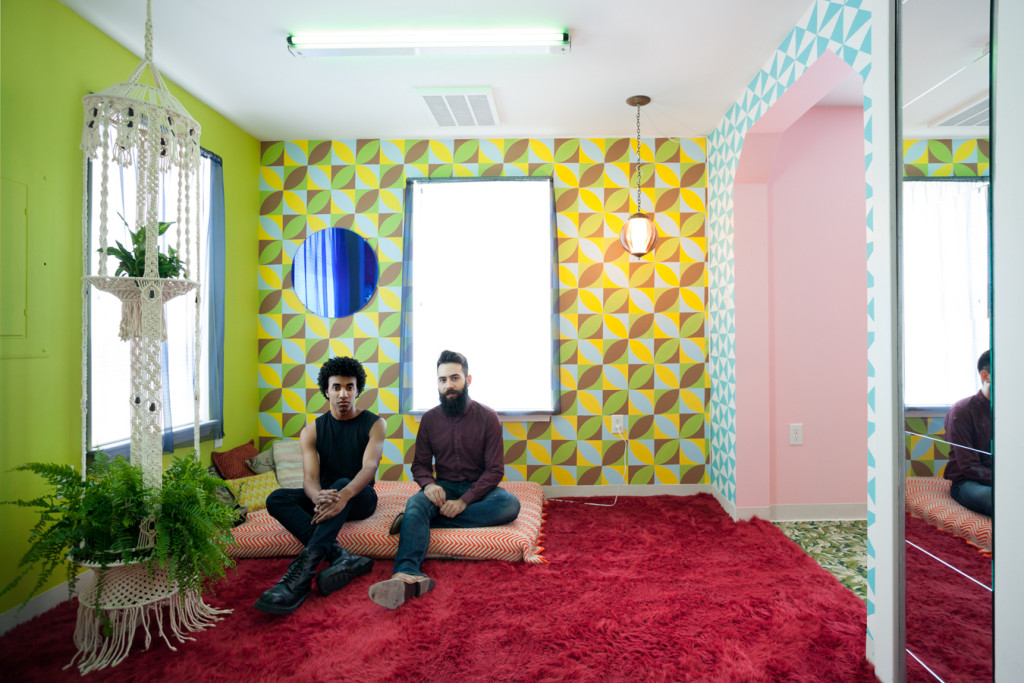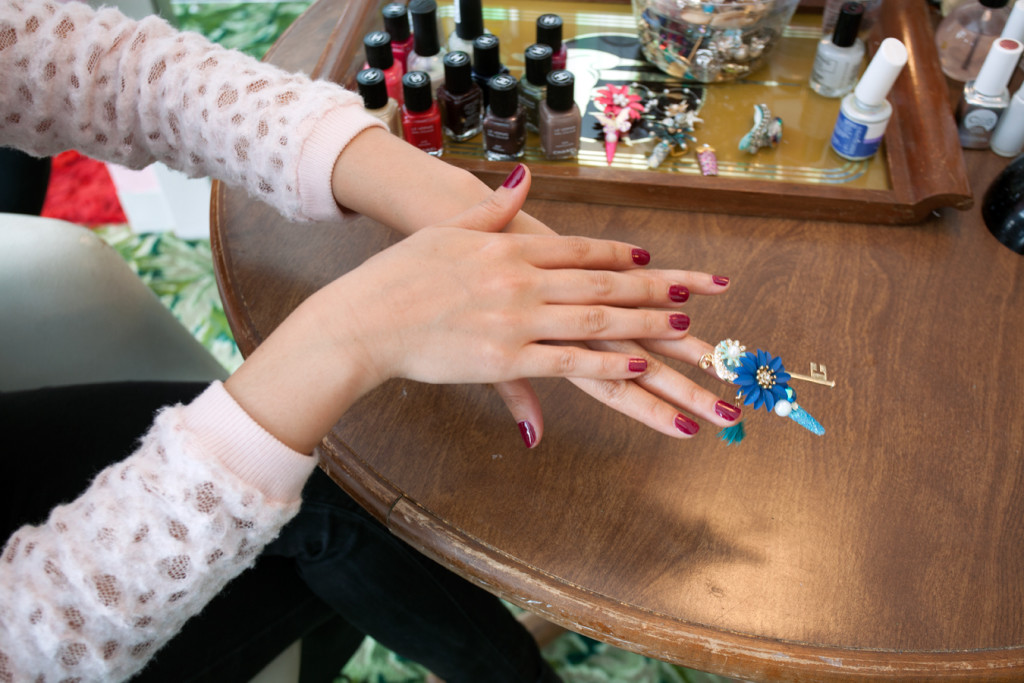Carlos Rolón: Museum of Contemporary Art Detroit
by Sarah Sharp
In some respects, the Mike Kelley Mobile Homestead (2010), permanently located at the Museum of Contemporary Art Detroit, is the perfect staging context for Carlos Rolón’s, known by the moniker Dzine, Vintage Voyages and Atomic Memories (2016). A site-specific reprisal of a theme that Rolón has worked on in previous installations, here, the artist’s personal childhood experience of his mother’s work-from-home business as a nail technician is on view. Roving under the name Imperial Nail Salon, Rolón has created nail art-related exhibitions and performances at Salon 94 and the New Museum in New York, as well as setting up shop at the Standard Hotel during Art Basel Miami Beach in 2012. Vintage Voyages takes up the same basic elements of Rolón’s previous iterations, but with a new twist: just like his mother’s nail salon, the installation is created within a domestic space, as the Mobile Homestead is a replica of artist Mike Kelley’s childhood home in the Metro Detroit suburbs.

There is an interesting chemistry in having the physical invocation of the childhood memories of two very different Midwestern artists collide in the same space. In some ways, the installation of Rolón’s exhibit inside a house-structure feels almost too on-the-nose; the texturally rich and colorful interior decor draws participants back into the aesthetics of the 1970’s; he has also succeeded in making a house look like a house, which is different than making a gallery look like a house, or manifesting his parents’ living room within a high-end hotel lobby. There is some culture clash as well—the trappings of Kelley’s upbringing scream of white suburbia, while Rolón’s work unceasingly reflects the influence of his Puerto Rican heritage and a more urbanized upbringing. But in the context of Detroit, it is some of the most powerful work the Mobile Homestead has done to recognize—and perhaps appeal to—the true racial demographics of a city still largely occupied by people of color, but being radically developed for the benefit of a growing influx of younger white residents.
Rolón seems to be presenting the idea that nail art is an art form, in his efforts to bring the practice into a fine art context. His installations employ local nail technicians to create custom nail art for visitors during open hours (in this case, every Sunday from 1:00-4:00 PM, through August 28). The nail artist in residence at the Mobile Homestead is Dina, and she was having a busy day when I dropped in, due in part to the Movement Festival weekend in progress. I poked through an assortment of rhinestones, baubles, filigrees, charms, and plastic toys, settling on a centerpiece that Dina used to create a medium-length nail creation, which she then affixed to my middle finger using temporary fixative strips. Dina was tired—traditionally Sunday would be a day off, since the demand for fresh nails is higher going into the weekend than coming out of it—and eager to finish her shift and take her daughter to a street carnival that was in town. Most of the visitors to the Mobile Homestead during my nail session were young, white, and showing some signs of party fatigue from the all-day/all-night techno-trip-metal-EDM fest.

Some weeks before my visit to the Mobile Homestead, I found myself in an increasingly heated conversation with the head of a local theater company. He was bemoaning the lack of values, saying that people refused to pay money for theater tickets, but would gladly put down $75 or more to attend a spectacle like Hair Wars. I was struck by his elitism—I had scored free tickets to one of these events in 2013, and, strictly from a production standpoint, it was head and shoulders above most regional theater. If people are more eager to spend money on tickets to hair styling competitions, or to go get their nails done, perhaps this suggests not that they are culturally illiterate, but that this is an art form that is more relevant or more enriching to their lifestyle. That it involves practical skills, assumed risk, dedicated (sometimes professional) practice, and careful aesthetic choices is indisputable.
But the class implications cut both ways, as I discovered 100 feet from the door of the Mobile Homestead, where I had to remove my fancy new nail art so I could start my car. While Rolón’s personal nail creations are intended as statement pieces rather than functional accessories, they are drawn from a live cultural practice that demonstrates status by effectively making people who wear elaborate nails incapable of doing almost anything else. It is not just a question of who puts money down for nail art, but who can afford to do little else with their hands other than to have them serve as a canvas.
Rolón’s 2016 efforts in the Detroit Metro area includes Commonwealth (2016), a three-month installation at the Oakland University Art Gallery in Rochester, MI, that incorporates a working barbershop as the most current evolution of Rolón’s Metamodernist interests. Much like the MOCAD installation, Rolón’s work is meticulously constructed and playfully engaging, enabling him to pose existential questions that dig their nails in deep enough to leave a mark.
Vintage Voyages and Atomic Memories at Museum of Contemporary Art Detroit runs through August 28, 2016